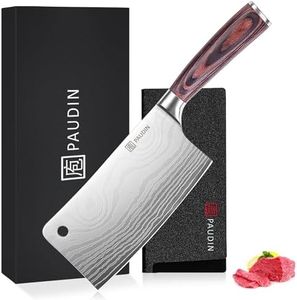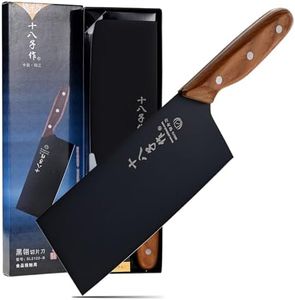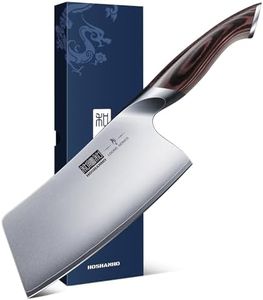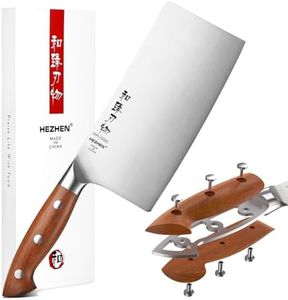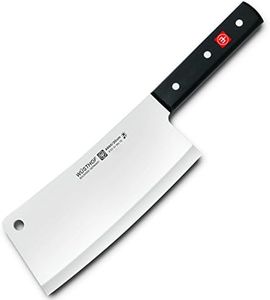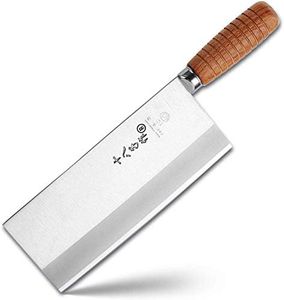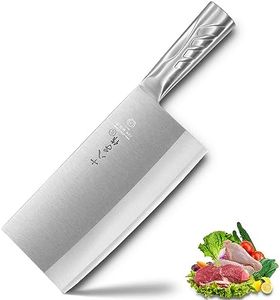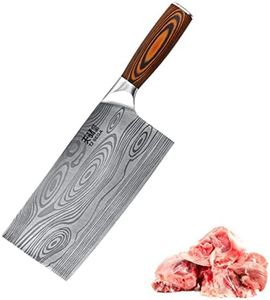We Use CookiesWe use cookies to enhance the security, performance,
functionality and for analytical and promotional activities. By continuing to browse this site you
are agreeing to our privacy policy
10 Best Chinese Cleavers
From leading brands and best sellers available on the web.Buying Guide for the Best Chinese Cleavers
Choosing the right Chinese cleaver can make a big difference in your kitchen experience. Unlike Western cleavers, Chinese cleavers (sometimes called 'vegetable cleavers' or 'Chinese chef's knives') are versatile tools designed for slicing, dicing, chopping, and even scooping up ingredients. It's important to consider how you'll use your cleaver in daily cooking before making a decision. Understanding the types and characteristics of these knives will help you pick one that fits your comfort, cooking style, and food preparation needs.Blade Thickness and WeightBlade thickness and weight are crucial factors for determining how the cleaver will handle different tasks. Lighter and thinner blades are typically used for slicing and precise vegetable work, making them suitable if you mostly prep vegetables or perform fine cuts. Thicker, heavier blades are better for tough ingredients like bone or hard squashes, but may be harder to control for delicate tasks. To pick what’s right for you, consider what you cut most often and how much weight feels comfortable in your hand for repetitive use.
Blade MaterialThe material of the cleaver’s blade impacts its sharpness, durability, and maintenance. Stainless steel blades resist rust and are easier to maintain, making them good for busy kitchens with less focus on knife upkeep. High-carbon steel holds a sharper edge and is favored for precision, but requires more care to prevent rust. If you want easy care, stainless might suit you best; if sharpness and edge retention matter most, consider high-carbon steel but be prepared for extra upkeep.
Blade LengthChinese cleaver blades usually range in length from about 6 to 8 inches. Shorter blades are easier to handle and control, making them ideal for home cooks or if you have smaller hands or workspace. Longer blades provide more cutting area and are useful for slicing larger ingredients or for batch prep. If you mostly cook for one or two people, a shorter blade may be sufficient, but for bigger families or more versatile use, a longer blade could be more practical.
Handle Design and ComfortThe handle of your cleaver affects comfort, grip, and overall safety during use. Handles come in various shapes and materials like wood, plastic, or composite. A good handle should feel comfortable and secure in your hand, without slipping. If you cook for long periods or have smaller hands, seek a handle design that is ergonomically shaped and not too bulky. Grip a few cleavers if possible and imagine repeated chopping—your comfort here should guide your choice.
Intended Use (General Purpose vs. Bone Chopping)There are two main types of Chinese cleavers: vegetable cleavers and meat cleavers. Vegetable cleavers have thinner blades for slicing, chopping, and dicing, while meat cleavers are thicker and heavier for breaking through bone. If most of your cooking involves vegetables, choose a thinner, lighter cleaver; if you need to chop bone or tougher ingredients, look for a heavier, sturdier cleaver designed for that kind of task.
Maintenance and CareDifferent cleavers require different levels of care. High-carbon steel needs to be cleaned and dried after every use to prevent rusting, while stainless steel is more forgiving. Sharpening frequency also depends on steel type—some require frequent honing to maintain performance. Think about how much time and effort you’re willing to put into maintaining your knife, and pick a cleaver whose upkeep matches your lifestyle.
